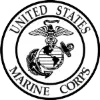Course Details
Course Description:
The VMware vSphere: Install, Configure, Manage [V6.7] course is a 5-day course that was designed to help students learn how to administer a vSphere infrastructure for an organization of any size.
This course features intensive hands-on training that focuses on installing, configuring, and managing VMware vSphere 6.7, which includes VMware ESXi 6.7 and VMware vCenter Server 6.7. This course trains students on how to administer a vSphere infrastructure for an organization of any size. It is the foundation for most VMware technologies in the software-defined data center and helps accelerate the transformation to cloud computing.
This course also fulfills a course requirement for the VMware Certified Professional 6.5 - Data Center Virtualization (VCP6.5-DCV) exam.
Exclusives included with your course purchase:
- vSphere Foundations Exam Voucher. (a $125 value)
- 12 Month post lab access.
- A practice test from Kaplan IT.
- Exam Objectives PDF.
Topics covered in the course include:
- Describing the software-defined data center
- Explaining the vSphere components and their function in the infrastructure
- Adding ESXi hosts to a VMware vCenter Server Appliance instance
- Managing vCenter Server Appliance
- Using a local content library as an ISO store, and deploy a virtual machine
- Describing vCenter Server architecture
- Using vCenter Server to manage an ESXi host
- Configuring and managing vSphere infrastructure with VMware Host Client and VMware vSphere Client Describe virtual networks with vSphere standard switches
- Configuring standard switch policies
- Using vCenter Server to manage various types of host storage: VMware vSphere VMFS, NFS, iSCSI, and RDM
- Examining the features and functions of Fibre Channel and VMware vSAN
- Managing virtual machines, templates, clones, and snapshots
- Migrating virtual machines with VMware vSphere vMotion
- Migrating virtual machine storage with VMware vSphere Storage vMotion
- Monitoring resource usage, and manage resource pools
- Discussing the VMware vSphere High Availability cluster architecture
- Configuring vSphere HA
- Managing vSphere HA and VMware vSphere Fault Tolerance
- Using VMware vSphere Replication and VMware vSphere Data Protection to replicate virtual machines and perform data recovery
- Using VMware vSphere Distributed Resource Scheduler clusters to improve host scalability
- Using VMware vSphere Update Manager to apply patches and perform basic troubleshooting of ESXi hosts, virtual machines, and vCenter Server operations
- Identifying troubleshooting methodology to logically diagnose faults and improve troubleshooting efficiency
Target Student: This course is ideal for:
- System administrators
- System engineers
Course Outline
Section 1. Course Introduction
- Introductions and course logistics
- Course objectives
- Describing the content of the course
- Gaining a complete picture of the VMware certification system
- Familiarizing yourself with the benefits of the VMware Education Learning Zone
- Identifying additional resources
Section 2. Introduction to vSphere and the SoftwareDefined Data Center
- Describing how vSphere fits into the softwaredefined data center and the cloud infrastructure
- Explaining how vSphere interacts with CPUs, memory, networks, and storage
- Using vSphere Client to access and manage your vCenter Server system and ESXi host
- Comparing virtual machine hardware version 14 to other versions
- Identifying the virtual network adapters, and Describing the enhanced VMXNET3
- Comparing the types of virtual disk provisioning
- Identifying the advantages of ESXi Quick Boot
Section 3. Creating Virtual Machines
- Creating, provision, and remove a virtual machine
- Explaining the importance of VMware Tools™
- Describing how to import a virtual appliance OVF template
- Manage VMware Tools
- Explaining troubleshooting OS installation and VMware Tools
Section 4. vCenter Server
- Describing the vCenter Server architecture
- Discussing how ESXi hosts communicate with vCenter Server
- Identifying the vCenter Server services, components, and modules
- Access and Configuring vCenter Server Appliance
- Using vSphere Client to manage the vCenter Server inventory
- Describing the rules for applying permissions
- Creating a custom role in vCenter Server
- Creating a backup schedule
- Restore vCenter Server Appliance from backup
- Monitor vCenter Server Appliance
Section 5. Configuring and Managing Virtual Networks
- Describing, create, and manage standard switches
- Configuring virtual switch security and loadbalancing policies
- Comparing vSphere distributed switches and standard switches
- Describing the virtual switch connection types
- Describing the new TCP/IP stack architecture
- Using VLANs with standard switches
Section 6. Configuring and Managing Virtual Storage
- Identifying storage protocols and storage device types
- Discussing ESXi hosts using iSCSI, NFS, and Fibre Channel storage
- Creating and manage VMware vSphere® VMFS and NFS datastores
- Describing the new features of VMFS 6.5
- Identifying the advantages of VMware vSAN™
- Describing guest file encryption
Section 7. Virtual Machine Management
- Using templates and cloning to deploy new virtual machines
- Modify and manage virtual machines
- Clone a virtual machine
- Upgrade virtual machine hardware to version 14
- Removing virtual machines from the vCenter Server inventory and datastore
- Using customization specification files to customize a new virtual machine
- Perform vSphere vMotion and vSphere Storage vMotion migrations
- Creating and manage virtual machine snapshots
- Creating, clone, and export vApps
- Identifying the types of content libraries and how to deploy and use them
Section 8. Resource Management and Monitoring
- Discussing CPU and memory concepts in a virtualized environment
- Describing what over commitment of a resource means
- Identifying additional technologies that improve memory usage
- Configuring and manage resource pools
- Describing methods for optimizing CPU and memory usage
- Using various tools to monitor resource usage
- Creating and use alarms to report certain conditions or events
Section 9. vSphere HA, vSphere Fault Tolerance, and Protecting Data
- Explaining the vSphere HA architecture
- Configuring and manage a vSphere HA cluster
- Using vSphere HA advanced parameters
- Enforce infrastructural or intra-app dependencies during failover
- Describing vSphere HA heartbeat networks and datastore heartbeats
- Examining the features and functions of vSphere Fault Tolerance
- Enabling vSphere Fault Tolerance on virtual machines
- Supporting vSphere Fault Tolerance interoperability with vSAN
- Examining enhanced consolidation of vSphere Fault Tolerance virtual machines
- Examining the features and functions of vSphere Replication
Section 10. vSphere DRS
- Describing the functions of a vSphere DRS cluster
- Creating a vSphere DRS cluster
- Viewing information about a vSphere DRS cluster
- Configuring virtual machine affinity, DRS groups, and VM-host affinity rules
- Removing a host from a vSphere DRS cluster
Section 11. vSphere Update Manager
- Describing the new architecture, components, and capabilities of vSphere Update Manager
- Using vSphere Update Manager to manage the patching of ESXi, virtual machines, and vApps
- Install vSphere Update Manager and the vSphere Update Manager plug-in
- Creating patch baselines
- Using host profiles to manage host configuration compliance
- Examining the features and functions of vSphere Update Manager EAM integration
- Integrate vSphere Update Manager with vSphere DRS
- Scan and remediate hosts 12 vSphere Troubleshooting
- Define the scope of troubleshooting
- Using a structured approach to solve configuration and operational problems
- Identifying troubleshooting methodology to logically diagnose faults and improve troubleshooting efficiency
Please check the course description to find prerequisite information.
Virtual Live Instructor
Free Training Materials
Convenient Scheduling






Testimonials
This was the class I needed.
The instructor Jeff took his time and made sure we understood each topic before moving to the next. He answered all of our questions, and I don't know about the rest of the students, but was very pleased with this experience.
I finally understand how to use Excel.
-Amanda T (Yale New Haven Hospital).
Great class!
We were able to cover a lot of information in one day without getting overwhelmed.
-Maria R (Microsoft).
Public Class Schedule
Instructor led training is a cost effective and convenient learning platform for busy professionals. Most courses are available at over 300 locations nationwide and Online.
The classes are taught via the RCI method by professionally certified instructors, and are usually limited to 12 or less students. Each student receives a training manual and practice problems, along with a free course retake. Click here to learn more about Instructor Led Training
Below is a list of upcoming Vmware-sphere Instructor Led Class Dates:
We offer private Vmware group training services for organizations looking to upskill their team members with a live-instructor.
Training options include:
Learn more about how Vmware Private Group Training from Business Computer Skills can help your team.
![VMware vSphere: Install, Configure, Manage [V6.7]](https://www.businesscomputerskills.com/images/vmware.png)


